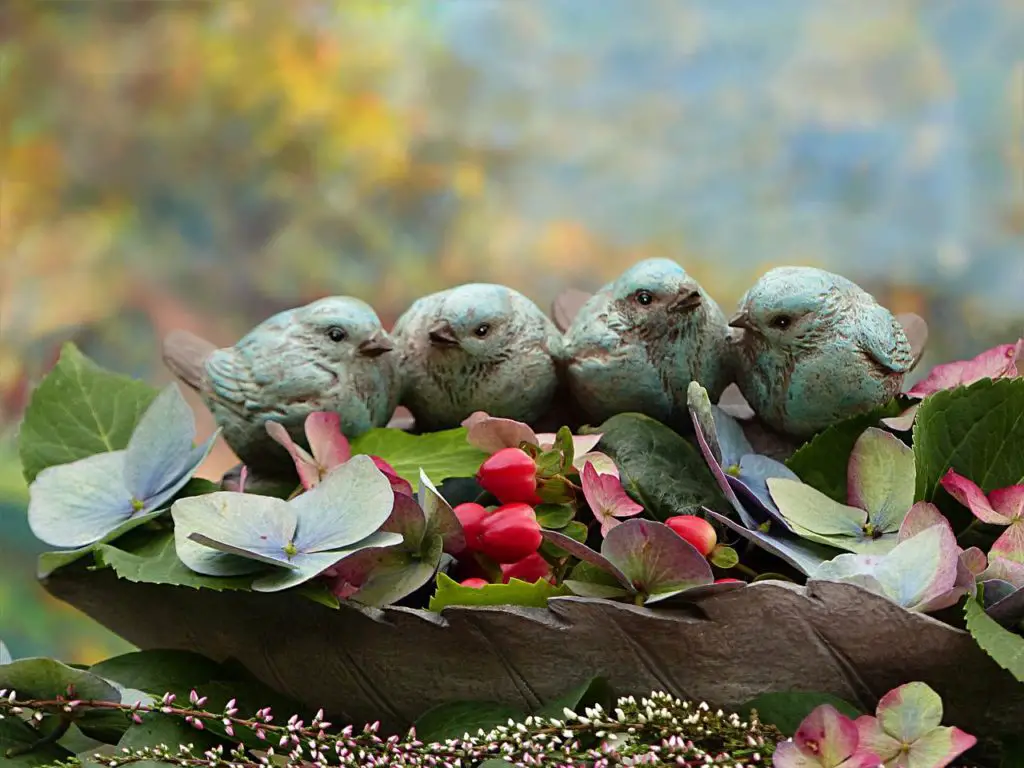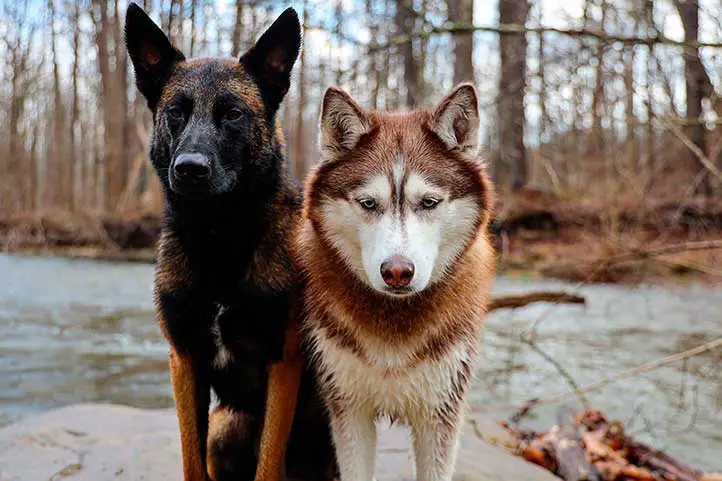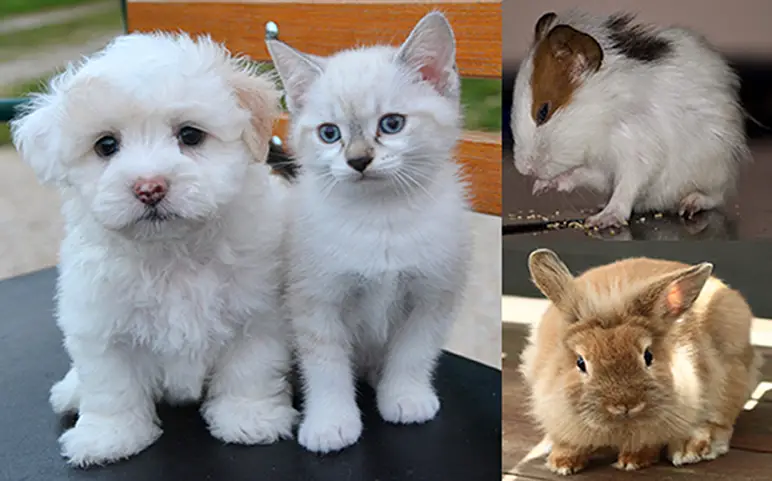Translated by Nick R
The hardest part of having a bird is its death after sharing so many years with us. Below, you’ll learn what to do with it once it’s gone to pet heaven.
Table of Contents
What should I do with my bird’s dead body?
When your pet bird dies, the key question is. What do I do with the body? – Should I just throw it in a black bag and that’s it?
A responsible owner would say absolutely no to the idea of disposing of his friend in a trash can, simply out of ethics and love for his pet. Although there are several ways to handle this situation, I recommend using any of these 3 methods:
- Burial.
- Pet cemetery.
- Dissection.
Follow the instructions below…
How to bury my pet bird when it dies?
As I had already mentioned, the best way to handle your dead pet bird’s body is to bury it; put it in the most loving and hygienic way possible.
With this in mind, and while you deal with the grief, you need to do all the investigation through the following steps and start with the removal of the body.
Prepare the tools to bury your dead bird
Before burying your friend as it should be, get all the necessary supplies to do so.
Here are all the items you have to have on hand:
- A box to be its coffin (optional). If it’s biodegradable, even better. This way, when it decomposes, it won’t have a direct negative impact on the soil.
- A small shovel to dig the earth and pick up your friend.
- Gloves, no matter what the cause of death is. I highly recommend that you wear gloves and wash your hands when you’re done.
- Newspaper, cardboard, or disposable rag as an additional barrier to prevent direct contact when picking up the body.
- A headstone with a memorable epitaph (optional).
Pick up your dead bird
Picking up the body is the most important step in performing a proper burial. Pick up the body with gloves and newspaper, you can help yourself with the shovel, keeping in mind the following causes of his death:
If your bird died of natural causes
Your bird may have died because it was about time,; it reached a certain age and had completed its life cycle.
- You’ll find it without signs of violence or disease and in most cases inside its cage, take it out carefully.
- You can keep it for a while in the refrigerator (maximum one week), obviously away from food, and wrapped in an airtight bag or another properly sealed container, before burying it.
You may also be interested in How do you know your bird is growing old?
If your bird died from an attack or accident
Your bird may have died from a dog or cat attack, or from an accident, and you should take into account the following:
- It’ll show signs of violence, whether bites or blows, and you’ll most likely find it out of its cage.
- Pick it up as soon as possible without hurting it more, the shovel can be very helpful.
- Bury it immediately, before it is further exposed to the decomposition process, mainly due to the wounds it may have.
If your bird died from a disease
Diseases are another possible cause of death, also not very pretty and just as traumatic for the bird. It is caused by an infectious agent (bacteria, fungi, viruses, parasites).
- Signs of death by disease. One of the most evident characteristics is warts, spots or a strange position since its death must have been due to sudden death.
Deterioration of the bird is the most revealing sign, but also the position. When a bird dies suddenly its body will normally be upside down after dropping immediately.
- You have to isolate the body, avoiding contact with other birds and yourself. Biosecurity measures are the most important.

You may be interested in Are medications and vaccines are necessary for your pet bird?
Dig a grave for your dead bird
If you already have the place and all the necessary tools ready to carry out the burial, you can start digging.
- Select a place for burial without problems or risks, both biological and physical. It can be a place inside or outside your house.
Ideally, it should be a green place, where it won’t be dug up by other animals, where it won’t produce bad odors and where it can rest in peace.
It’s not advisable to do it in an orchard because of the use given to the land. If you do it inside your house, make sure you do it in a hygienic place and without biological risk, especially when the cause of death has been a contagious disease.
- Start digging with the shovel until you open a hole in the ground with a prudent depth to provide protection to the body and try to make it a little bigger than the box, if you are going to use one. Remember to do this using gloves at all times.
Do not dispose of the dug soil, save it for later.
Bury your dead bird
We’re in the last step of the process, you have everything ready to say goodbye to your bird.
- Put your bird in the box or simply insert its body carefully into the hole you just dug. Don’t forget to use gloves and newspaper as a barrier.
- Cover it with enough soil with the shovel until it is completely covered. You can leave a small mound sticking out so that it provides protection for the body.
- Use a stone or a tombstone with a durable material that allows you to write on it, it will serve to mark his grave and give it meaning.
- Put an epitaph with his name, if you want, it will be a more beautiful ritual in his honor.
- Plant a plant. It’s a good idea to generate life after death. Besides, it’s a way to give them a dignified and ecological burial.
Pet cemetery for my dead bird?
Another option to bury your little friend is to give him a place in a pet cemetery where you can bury him with all the rituals, but in a grave in a special place to give eternal rest to your bird.
To bury your bird in a pet cemetery, just follow these 3 simple steps:
Get in contact with a funeral home
Contact a funeral home specializing in pets with all the proper credentials. There is also the option of having quoted an insurance or funeral plan, if you have not done so, you can do it through a third party or directly with the insurers.
Funeral insurance allows you to be prepared and pay off the debt at a moment’s notice with a form of savings that you can carry on a monthly basis with very low values, depending obviously on the funeral plan you choose.
Remember that the process is very similar to that of a person, he/she is your friend, and he/she needs you to hire the service with a company that can offer him/her a proper burial.
Choose a funeral plan
The second step is to choose a funeral plan for your pet. Usually, these funeral homes have a package of plans that suit different clients and needs, so this will be a crucial point in the burial process. I make the following recommendations:
- Keep in mind what type of pet you have (species of bird) because this will largely determine the process of selecting the plan.
- Select a plan that includes immediate pickup of the body.
- Look at your budget and choose a plan that fits your budget. In some funeral homes, you’ll find very high prices for this type of service, exceeding $145.
- Pay attention to the standards with which they carry out the processes, from the collection to the subsequent preparation of the body for its farewell. In addition, that allows the accompaniment of the whole process.
- Define the type of farewell you want to give to your friend. There are options such as cremation to preserve their ashes or biotransformation, which consists of burying them and turning them into a plant. Or you can simply choose to bury them in a conventional grave.
Never forget your friend
Finally, the plan you selected above will most likely include some type of memorial in addition to the ashes in the case of cremation. Ideally, it should include the option of taking a memento with you, if he/she has not been buried conventionally and you do not have the means to visit him/her at a gravesite.
Can I keep my bird when I die?

In case you don’t want to bury your bird, but rather keep it for “eternity”, there is also the option of stuffing it. The things to keep in mind about this method of transitioning your pet from life to death are as follows:
Dissecting a bird is a practice known as taxidermy that consists of a series of procedures to preserve the body and avoid the natural decomposition process. Basically, the bird’s tissues are denatured so that they remain intact for years. In other words, it’s almost like mummifying your friend.
Do it with a taxidermist expert in this type of process, especially when it comes to birds, since, unlike mammals, they have feathers, which require special care.
There are two methods today, one is handmade and the other is taxidermy through molds. Below are the characteristics of each one:
Handmade taxidermy
Handmade taxidermy has always been carried out and, as its name indicates, it is the manual dissection of the animal step by step. These are its characteristics:
- The taxidermist uses traditional methods, in which the skull and bones of the animal are preserved.
- Handmade taxidermy is expensive.
- It requires a lot of time for its elaboration.
- You can choose any pose.
- The specialist recreates the animal as it is.
Taxidermy with molds
The technique of taxidermy through molds is more recent. Some of the characteristics of this method are:
- The work of the taxidermist consists of making the creations from prefabricated polyurethane molds, sometimes preserving only part of the skull.
- The taxidermy with molds is less expensive than the handmade one.
- It requires less time.
- You can choose fewer postures.
- The specialist does not recreate the animal exactly, presenting some rigidity.
My condolences
To finish, I just want you to think about the wonderful moments you shared with your friend and know that, just as you do at this moment, I also buried a couple of friends and I understand your pain. If you have more of these little animals, take care of them, so that as far as possible they do not die for reasons other than their age.
You may also be interested in
How to take care of a cockatiel?


